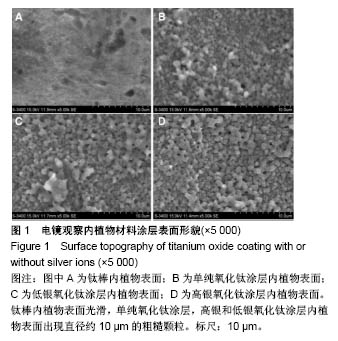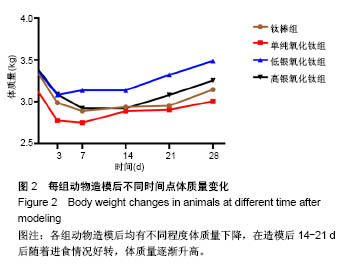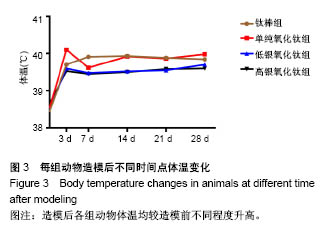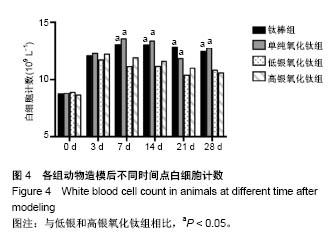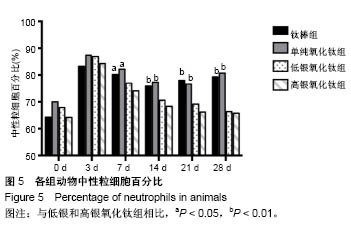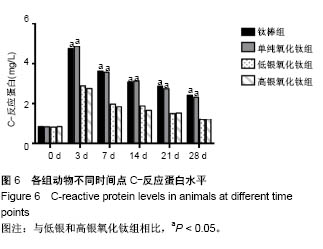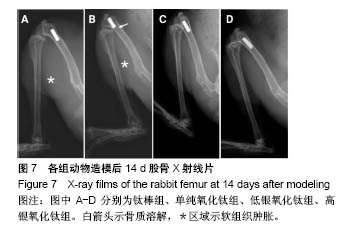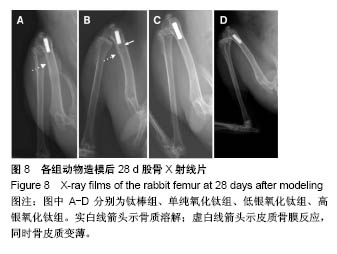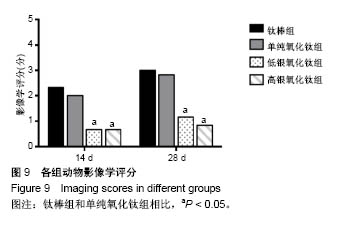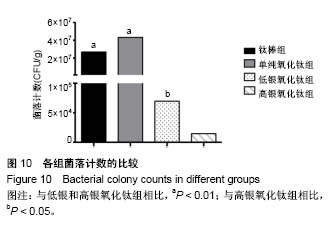| [1] Schierholz JM, Beuth J. Implant infections: a haven for opportunistic bacteria. J Hosp Infect. 2001; 49(2):87-93.[2] Hwang CM, Lee BK, Green D, et al. Auricular reconstruction using tissue-engineered alloplastic implants for improved clinical outcomes. Plast Reconstr Surg. 2014;133(3):e360-369.[3] Murphy EH, Szeto WY, Herdrich BJ, et al. The management of endograft infections following endovascular thoracic and abdominal aneurysm repair. J Vasc Surg. 2013;58(5):1179-1185.[4] Bozic KJ, Lau E, Kurtz S, et al. Patient-related risk factors for periprosthetic joint infection and postoperative mortality following total hip arthroplasty in Medicare patients. J Bone Joint Surg Am. 2012;94(9): 794-800.[5] Bozic KJ, Lau E, Kurtz S, et al. Patient-related risk factors for postoperative mortality and periprosthetic joint infection in medicare patients undergoing TKA. Clin Orthop Relat Res. 2012; 470(1):130-137.[6] Chen WH, Jiang LS, Dai LY. Influence of bacteria on spinal implant-centered infection: an in vitro and in vivo experimental comparison between Staphylococcus aureus and mycobacterium tuberculosis. Spine. 2011; 36(2):103-108.[7] Zimmerli W. Clinical presentation and treatment of orthopaedic implant-associated infection. J Intern Med. 2014;276(2): 111-119.[8] Semeykina AL, Skulachev VP. Submicromolar Ag+ increases passive Na+ permeability and inhibits the respiration-supported formation of Na+ gradient in Bacillus FTU vesicles. FEBS Lett. 1990; 269(1): 69-72.[9] 王静水,冀志江,等.银系无机抗菌材料研究进展.材料导报[J],2013,27(17): 59-64.[10] Taheri S, Cavallaro A, Christo SN, et al. Substrate independent silver nanoparticle based antibacterial coatings. Biomaterials. 2014;35(16): 4601-4609.[11] Reithofer MR, Lakshmanan A, Ping AT, et al. In situ synthesis of size-controlled, stable silver nanoparticles within ultrashort peptide hydrogels and their anti-bacterial properties. Biomaterials. 2014;35(26): 7535-7542.[12] Zhao L, Wang H, Huo K, et al. Antibacterial nano-structured titania coating incorporated with silver nanoparticles. Biomaterials. 2011;32(24): 5706-5716.[13] Arora S, Tyagi N, Bhardwaj A, et al. Silver nanoparticles protect human keratinocytes against UVB radiation-induced DNA damage and apoptosis: potential for prevention of skin carcinogenesis. Nanomedicine. 2015; 11(5):1265-1275.[14] Zhang T, Wang L, Chen Q, et al. Cytotoxic potential of silver nanoparticles. YMJ. 2014; 55(2):283-291.[15] Park EJ, Yi J, Kim Y, et al. Silver nanoparticles induce cytotoxicity by a Trojan-horse type mechanism. Toxicol In Vitro. 2010; 24(3):872-878.[16] Li B, Liu X, Cao C, et al. Biological and antibacterial properties of plasma sprayed wollastonite coatings grafting gentamicin loaded collagen. J Biomed Mater Res A. 2008;87(1):84-90.[17] Postiglione L, Di Domenico G, Ramaglia L, et al. Different titanium surfaces modulate the bone phenotype of SaOS-2 osteoblast-like cells. Eur J Histochem.2004; 48(3):213-222.[18] Rautray TR, Narayanan R, Kim KH. Ion implantation of titanium based biomaterials. Prog Mater Sci. 2011;56(8):1137-1177.[19] Rautray TR, Narayanan R, Kwon TY, et al. Surface modification of titanium and titanium alloys by ion implantation. J Biomed Mater Res A. 2010; 93(2):581-591.[20] Kose N, Otuzbir A, Peksen C, et al. A silver ion-doped calcium phosphate-based ceramic nanopowder-coated prosthesis increased infection resistance. Clin Orthop Relat Res. 2013;471(8):2532-2539.[21] Norden CW. Lessons learned from animal models of osteomyelitis. Rev Infect Dis. 1988; 10(1):103-110.[22] Norden CW, Myerowitz RL, Keleti E. Experimental osteomyelitis due to Staphylococcus aureus or Pseudomonas aeruginosa: a radiographic- pathological correlative analysis. Br J Exp Pathol. 1980;61(4):451-460.[23] Tian Y, Cao H, Qiao Y, et al. Antibacterial activity and cytocompatibility of titanium oxide coating modified by iron ion implantation. Acta Biomater. 2014; 10(10):4505-4517.[24] Mauerer A, Lange B, Welsch GH, et al. Release of Cu2+ from a copper-filled TiO2 coating in a rabbit model for total knee arthroplasty. J Mater Sci Mater Med. 2014; 25(3):813-821.[25] Wang G, Mao Z, Zhang L, et al. Meta-analysis of locking plate versus intramedullary nail for treatment of proximal humeral fractures. J Orthop Surg Res. 2015; 10:122.[26] Deye GA, Gettayacamin M, Hansukjariya P, et al. Use of a rhesus Plasmodium cynomolgi model to screen for anti-hypnozoite activity of pharmaceutical substances. AM J Trop Med Hyg.2012; 86(6):931-935.[27] Holt KB, Bard AJ. Interaction of silver(I) ions with the respiratory chain of Escherichia coli: an electrochemical and scanning electrochemical microscopy study of the antimicrobial mechanism of micromolar Ag+. Biochemistry. 2005;44(39):13214-13223.[28] Yang X, Yang W, Wang Q, et al. Atomic force microscopy investigation of the characteristic effects of silver ions on Escherichia coli and Staphylococcus epidermidis. Talanta. 2010;81(4-5):1508-1512.[29] Qin H, Cao H, Zhao Y, et al. In vitro and in vivo anti-biofilm effects of silver nanoparticles immobilized on titanium. Biomaterials. 2014;35(33):9114-9125.[30] Spangehl MJ, Masri BA, O'Connell JX, et al. Prospective analysis of preoperative and intraoperative investigations for the diagnosis of infection at the sites of two hundred and two revision total hip arthroplasties. J Bone Joint Surg Am. 1999;81(5):672-683. |
.jpg)
